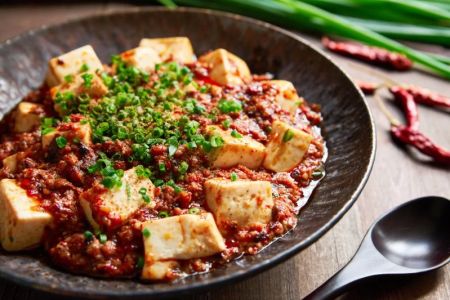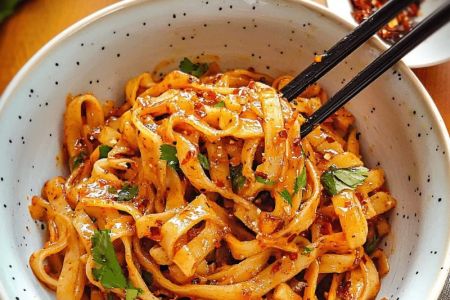- Understanding-the-Chinese-Bakery-Market-in-California
- Legal-Requirements-and-Business-Setup
- Developing-Your-Bakery-Menu-and-Sourcing-Ingredients
- Finding-the-Right-Location-and-Equipment
- Marketing-Your-Chinese-Bakery-Effectively
- Learning-from-Real-Examples-and-Case-Studies
1. Understanding the Chinese Bakery Market in California
California, with its diverse and multicultural population, offers a fertile ground for specialty businesses like Chinese bakeries. To start a Chinese bakery in California successfully, it’s crucial first to understand the market landscape. Chinese bakeries are unique in their offerings, blending traditional pastries such as egg tarts, pineapple buns, and mooncakes with contemporary flavors that appeal to a broad audience.
In many California cities like San Francisco, Los Angeles, and San Gabriel Valley, there is a strong demand for authentic Chinese bakery products, both from the Chinese community and curious food lovers. However, competition is stiff, and standing out requires a deep understanding of customer preferences and evolving trends. This means researching the demographics of your target neighborhood, customer tastes, and price expectations.
It’s also important to realize that California’s food culture is dynamic, so innovating while respecting traditional recipes can be a key success factor. For anyone looking to start a Chinese bakery in California, this market insight lays a solid foundation.
1.1 Recognizing Customer Preferences
Chinese bakery customers often seek authenticity but appreciate convenience and variety. Including popular items such as custard buns alongside vegan or gluten-free options can attract a wider audience. Taking time to taste-test with potential customers and gather feedback before launching is invaluable.
1.2 Competitor Analysis
Spend time visiting existing Chinese bakeries to observe what works well. Pay attention to their bestsellers, pricing, store layout, and customer service. This research will help shape your own unique selling points and avoid direct clashes with established businesses.
2. Legal Requirements and Business Setup
Starting any food business in California requires navigating several legal and regulatory steps. For a Chinese bakery, it is critical to comply fully with local and state food safety regulations, zoning laws, and business licensing.
2.1 Business Registration and Licensing
First, choose your business structure: sole proprietorship, LLC, or corporation. Many small bakeries prefer LLCs for liability protection and tax flexibility. Then register your business with the California Secretary of State and obtain a Federal Employer Identification Number (EIN) from the IRS.
2.2 Food Safety and Health Permits
California’s Department of Public Health requires food businesses to obtain food handler permits and comply with strict sanitation standards. Your bakery will need a health inspection before opening. Proper training for all staff on food safety is essential to avoid violations and build customer trust.
2.3 Zoning and Location Permits
Make sure the chosen bakery location is zoned for food production and retail. This can save costly headaches down the road and is especially important if you plan to produce baked goods on-site.
3. Developing Your Bakery Menu and Sourcing Ingredients
Creating a menu that balances tradition with innovation is a central part of starting a Chinese bakery. Signature items like egg tarts, wife cakes, and steamed buns should anchor your offerings, but consider seasonal or fusion items to attract diverse customers.
3.1 Crafting Authentic Recipes
Perfecting recipes takes time and skill. It’s often helpful to learn from experienced bakers or culinary schools specializing in Asian pastries. Experimenting with textures, sweetness levels, and fillings can differentiate your bakery’s taste.
3.2 Ingredient Sourcing
Sourcing high-quality ingredients is crucial. California’s robust Asian markets provide excellent access to specialty flours, bean pastes, and fresh dairy. Reliable suppliers ensure consistency and help maintain product quality over time.
3.3 Managing Costs
Keep close track of ingredient costs to price your products competitively without sacrificing quality. Efficient inventory management reduces waste and improves profitability.
4. Finding the Right Location and Equipment
Location can make or break a bakery’s success. Choose a site with good foot traffic, proximity to your target customer base, and adequate space for baking and retail display.
4.1 Location Considerations
Areas near Asian communities or busy shopping districts often yield higher customer volumes. Parking availability and public transportation access are additional factors that influence customer convenience.
4.2 Essential Equipment
Invest in commercial ovens, proofers, mixers, and display cases tailored for Chinese bakery products. Quality equipment ensures consistent baking results and can handle the daily production volume.
5. Marketing Your Chinese Bakery Effectively
Successful marketing builds awareness and attracts repeat customers. A mix of traditional and digital marketing strategies can position your bakery as a beloved local spot.
5.1 Branding and Store Design
A welcoming, clean store environment that reflects Chinese culture with modern touches can draw customers. Eye-catching signage and packaging further boost brand recognition.
5.2 Social Media and Online Presence
Using social media platforms like Instagram and Facebook to showcase your products and share customer stories increases engagement. Posting photos, videos, and behind-the-scenes content builds excitement and loyalty.
5.3 Community Engagement
Participate in local food festivals, offer samples, and collaborate with other businesses. Word-of-mouth remains one of the strongest marketing tools in this industry.
6. Learning from Real Examples and Case Studies
Consider the story of Mei’s Bakery in San Gabriel, California, which started as a small family-run shop specializing in traditional mooncakes. By innovating with new fillings and leveraging social media marketing, Mei’s Bakery expanded rapidly and became a community staple.
This example shows how blending respect for tradition with modern business strategies can yield great success. Another case is the rise of Lucky Star Bakery in Los Angeles, which differentiated itself by offering vegan and gluten-free options, attracting health-conscious customers beyond the typical demographic.
For entrepreneurs planning to start a Chinese bakery in California, learning from such cases provides valuable insight into adapting to market needs and evolving customer expectations.
If you are looking for the best supplies, equipment, or professional services to help your bakery thrive, visiting Chinese Food can connect you with trusted vendors and experts who understand the unique needs of Chinese bakeries.








